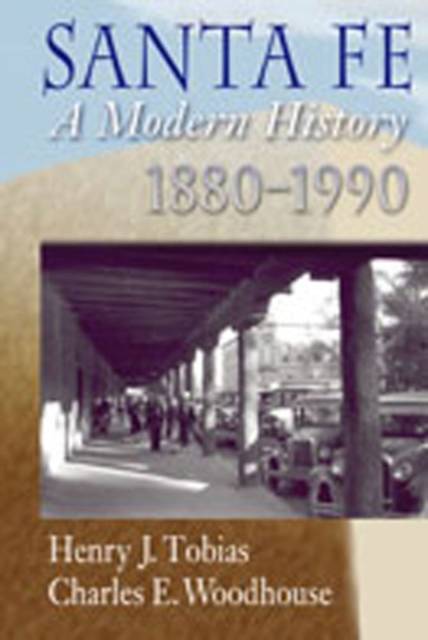
- Afhalen na 1 uur in een winkel met voorraad
- Gratis thuislevering in België vanaf € 30
- Ruim aanbod met 7 miljoen producten
- Afhalen na 1 uur in een winkel met voorraad
- Gratis thuislevering in België vanaf € 30
- Ruim aanbod met 7 miljoen producten
Omschrijving
From 1880, when the railroad reached Santa Fe, to the early 1990s, the city was transformed from a territorial outpost to a modern community. This book focuses on what changes over the past 110 years have meant to the city's inhabitants. The result is a readable, captivating social history centered on the essence of Santa Fe--the lives of its Hispano and Anglo residents.
Initially, the railroad's arrival spelled the loss of the town's commercial advantage as the terminus of the Santa Fe Trail, setting off a thirty-year economic decline. For Santa Feans of the early twentieth century, their city was a place of overlays in which the remnants of the past combined and interacted with the vital, living realities of the present and the promises of the future. Quite readily, a tourist industry emerged early in the twentieth century based on interest in the surrounding Native American pueblos, the area's Hispanic heritage, and a growing artistic and literary scene.
Over the course of the twentieth century, how Santa Feans resolved (or failed to resolve) problems associated with economic development and tourism have been recurring questions. The authors see a contradiction between the commitment to preserve and expand the city's attraction for tourists and the need for employment opportunity beyond the service and tourist industry. But the city's Anglo and Hispanic residents have accommodated to each other through intermarriage, health practices, education, and many other ways to create a unique city for its inhabitants.
It is in the process of ethnic interaction that the population created new cultural standards that have raised the city's stature to national prominence.
Specificaties
Betrokkenen
- Auteur(s):
- Uitgeverij:
Inhoud
- Aantal bladzijden:
- 284
- Taal:
- Engels
Eigenschappen
- Productcode (EAN):
- 9780826323316
- Verschijningsdatum:
- 1/08/2001
- Uitvoering:
- Hardcover
- Formaat:
- Genaaid
- Afmetingen:
- 163 mm x 237 mm
- Gewicht:
- 648 g

Alleen bij Standaard Boekhandel
Beoordelingen
We publiceren alleen reviews die voldoen aan de voorwaarden voor reviews. Bekijk onze voorwaarden voor reviews.











